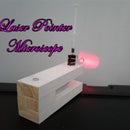Introduction: Casting Concrete With Recycled Plastic Aggregate
One of the biggest challenges with recycling is plastic. There's not much of a market for scrap plastic, so the profit margins on processing and reselling it are slim. When oil prices dip, it becomes cheaper to make new plastic than to recycle existing waste. The more ways we find to reuse waste plastic, the more we can keep out of the landfill.
We recently received some Chang Shapecrete from the Instructables Build Night program. I started playing around with some and decided to try adding scrap plastic as an aggregate. I would usually perfect a project a little more before posting it, but I was so excited with my results that I had to share it with the Instructables community so other could give it a try.
Step 1: Preparing the Plastic
I use a lot of spray paint, so I had a lot of colorful plastic caps. I put the caps in a plastic bag and whacked them repeatedly with a hammer to crush them, then I cut them into smaller pieces with utility scissors.I processed several batches to insure that there would be enough aggregate to make the final product colorful.
Step 2: Casting the Form
I mixed about 16 ounces of concrete with 2 1/2 cups of chopped plastic. I added enough water to make a pourable consistency and let it sit for a few minutes. I gave it a good stir and poured it into a cookie tin. I tapped it to free any air bubbles and smoothed the mixture out with a spatula. I wrapped it loosly in a plastic bag to keep it moist while it cured and set it aside for two days.
Step 3:
I used aviation shears to make cuts in the side of the can. I used linesman's pliers to pull the strips down the side until the tin came loose. The inner cast surface was incredibly smooth- like marble.
Step 4: Grinding and Polishing
I used my big angle grinder with a heavy grit concrete grinding disc to smooth out the top of the casting. This began to expose the plastic. When the surface was smooth, I switched to a rubber backer disc and sandpaper. I started with 120 grit, went to 150 and finished with 240 grit. This gave a smooth, semi-reflective surface. If I was doing a serious finish, I would continue up to 1200 grit and wet sand it. For a test piece 240 is just fine.
Another reason I quit polishing was because I was starting to open up air bubbles. The next time I do this (really soon!) I'll vibrate the mold with my pneumatic air hammer to work out the bubbles better.
Step 5: Sealing the Concrete
I used several coats of water based Minwax Polyacrylic satin clear coat. For a piece that won't be in the weather or get much wear and tear this will be fine. If you're creating a piece for outside go with a solvent based sealer. If I was using this technique for a table top I'd use a pourable acrylic to fill any imperfections and leave a water-smooth, shiny surface.
This method has it's pros and cons. It definitely looks cool. It also provides a use for waste plastic. It also stretches the concrete a bit as the plastic replaces it by volume. Unfortunately, it also weakens the concrete a bit. This can be remedied by adding wire mesh or rebar to strengthen the concrete. Depending on what kind of plastic you use, it may be susceptible to UV radiation, but UV protective sealers will prevent damage..
I'm thrilled with the outcome of this test casting and can't wait to try more! Now it's your turn. There's a concrete casting contest coming up. Take this idea and see what you can do with it. Good luck!




